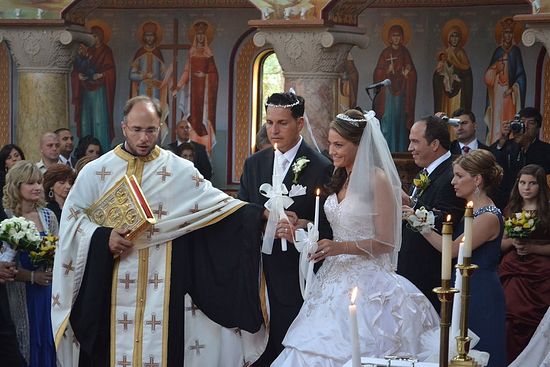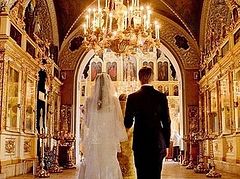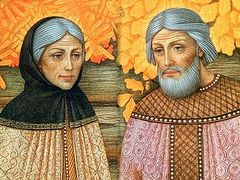Source: Public Orthodoxy
December 9, 2015
This essay was originally delivered as a public talk at the June 2015 Fordham/OTSA conference on the upcoming Great and Holy Council of the Orthodox Church. It was part of a panel on canonical impediments to marriage.
When examining marriage, starting with the liturgy provides an antidote from a legalistic affliction, which is easy to succumb to when applying the canons. Liturgy is the ultimate pastoral resource, and pastoralia is the goal of the canons, matters concerning our life in Christ. Throughout the liturgical rite, the Church presents its vision of Christian marriage: marriage is done not for something in and of itself, but by the design of God, who has ordained it as a holy act, done in order that a man and a woman come together in unity for a life with God.
This vision fits neatly with the canonical vision of marriage, which was provided for the Church by the classic Roman legal definition of marriage formulated by the Roman jurist, Modestinus, “Marriage is the union of a man and woman, a partnership for – a sharing of the whole of life, and the participation in divine as well as human laws (XXIII.2.1).” The emphasis here on union, sharing, and participation was understood one way by the pagan Roman world of Modestinus, but in a different way in the Christian Church.
This is precisely the task of the Church’s canonist: establish the rule and measure a response to challenges or aberrations to the rule. Aberrations of marriage can be grouped into three broad topics: divorce, mixed marriage, and cohabitation. In the canonical tradition of the Church, for each of these challenges the Church’s teaching is clear: it tolerates divorce only in extreme situations, forbids mixed marriages, and does not even recognize cohabitation as a state.
While the Church’s teachings are clear, practice demonstrates that requiring strict application is not always possible. And here is the basic canonical conundrum of rule and praxis: the Church must respond to challenges (praxis), but also make clear its canon (rule). Underneath everything we teach is the person of Jesus Christ, who gave his life and was willingly put to death on the Cross for the salvation of all. He has given us various means to attain this salvation, and one of them is Christian marriage in which a man and woman are joined, as from the beginning, as ordained by God, in order to work out their salvation. Any deviation from this is a deviation from Christian marriage. So, to address any aberration of Christian marriage, it is incumbent on us to proclaim Jesus Christ, his death and resurrection, and then the canon of the Church.
But in any response, the Church must also remember its mission to bring all to salvation in Christ. In the words of the canons themselves, “the entire concern of God and the one entrusted with pastoral authority is to bring back the lost sheep and heal the serpent’s bite: neither pushing the sufferer to the precipice of despair, nor giving him rein to lead a dissolute or contemptuous life, but by one or another means, be it more severe and astringent medicines, or milder and more soothing ones, to stay the suffering and strive for the healing of the ulcer, examining the fruits of repentance and wisely guiding the man who is called to the splendor on high (Trullo 102).”




